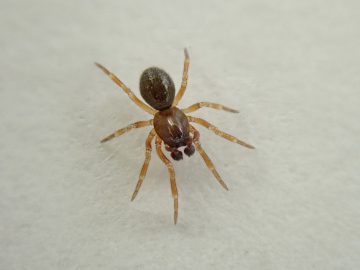Summary for Tapinocyba mitis (Araneae)
previous species | next species
National Distribution
Terms of Use. Double-click on map to go to region

Explore Regional Distribution
Please log on and add a note on this species
About this species
Recorded altitude range6m to 160m
Species text
DistributionThe species is confined to a small part of south-central England. Otherwise, it appears to have been recorded only from Latvia, France, Spain, Bulgaria and Russia.
Habitat and ecology
T. mitis occurs among deep litter and moss under pine, and on open dry heathland, appearing in small numbers in the first few years after fire, but not reaching reasonable numbers until after about 8 years, and probably most numerous in mature heather. It is adult from October to June, but the main activity period is in February and March.
Status
UK Biodiversity Action Plan priority species. It was frequent in heathland areas in the New Forest, Dorset and West Sussex, but appears to have declined massively and since 1992 has only been recorded from one 10-km square. However, as the spider is likely to still occur in at least some of its former heathland sites it is not thought to be critically endangered. Area of occupancy has apparently declined from 16 hectads before 1992 to just one since that date.
Threats
Conversion of heathland to other land-use in south-central England.
Management and conservation
Protect existing heathland from development pressures from agriculture, forestry and building. Maintain some mature heather and pine on heathland.
Text based on Dawson, I.K., Harvey, P.R., Merrett, P. & Russell-Smith, A.R. (in prep.). References
Adult Season
Habitats
background methodology
Recorded management for locations with Tapinocyba mitis
Recorded substrate and hydrology for locations with Tapinocyba mitis
Images
please log on and upload a new image for this speciesSee also A-Z Species Index - A-Z Picture Index - previous species | next species
